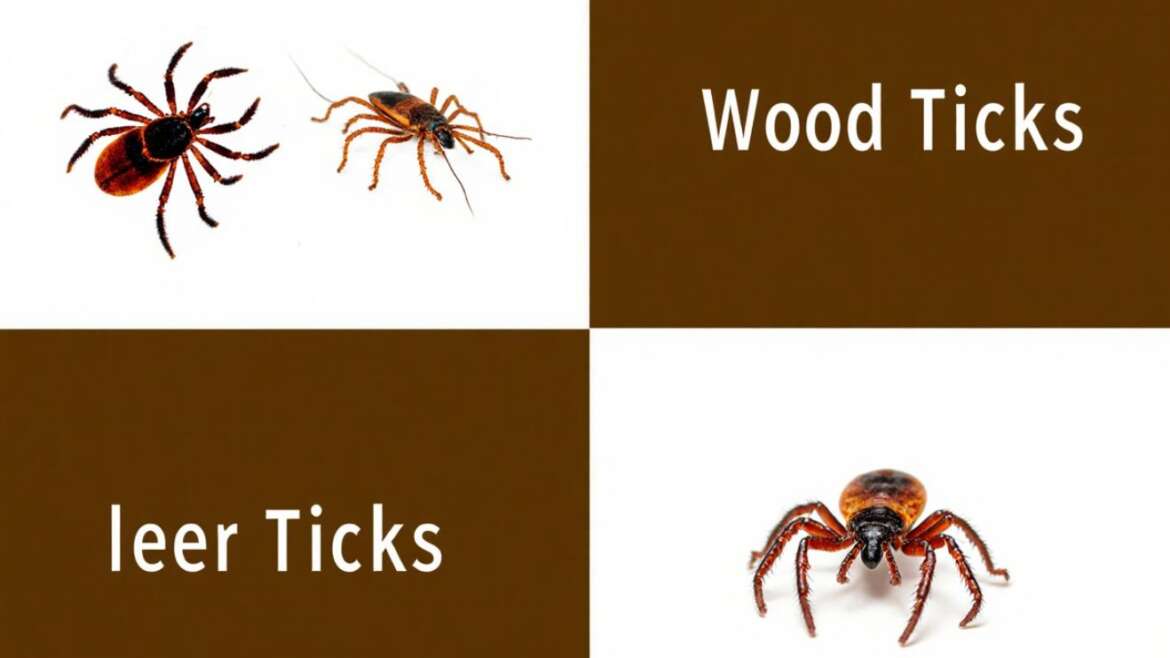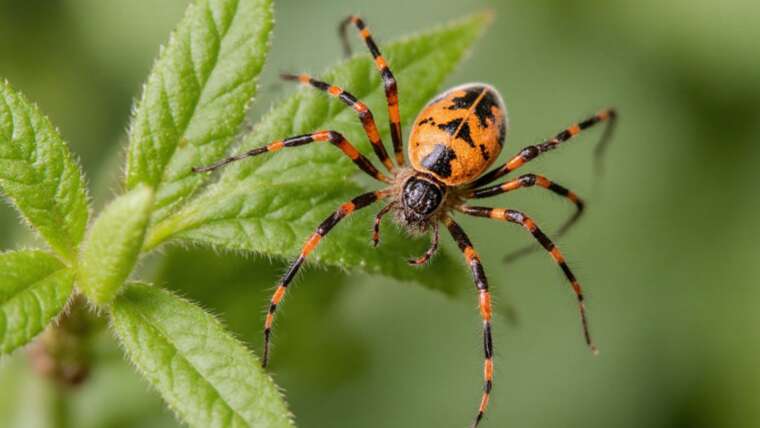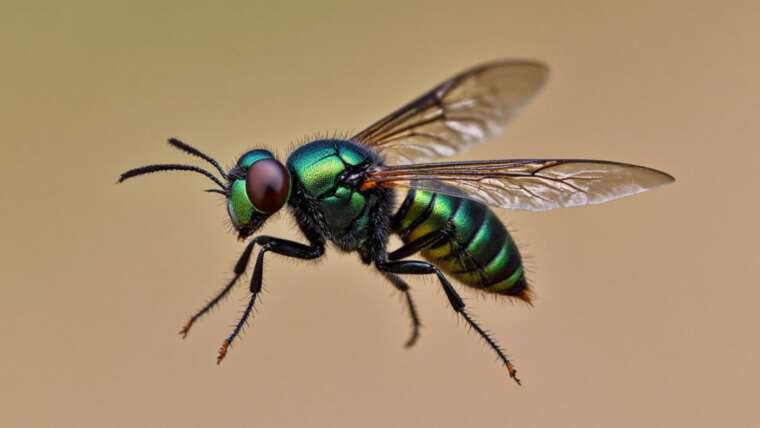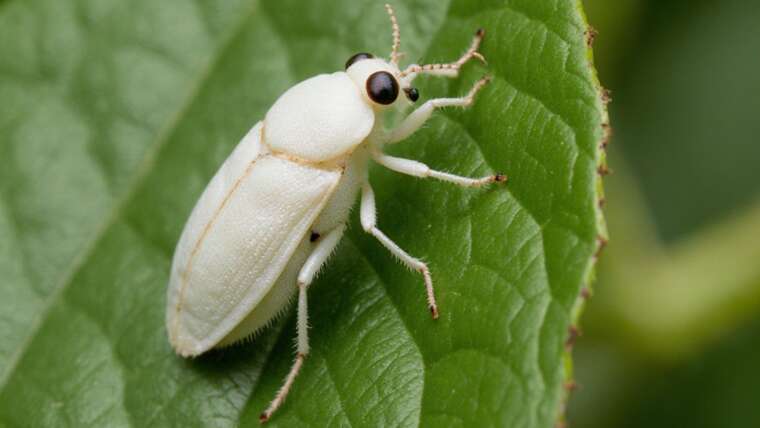Understanding the differences between deer ticks and wood ticks is vital for your health and safety. While both are ticks, they differ significantly in appearance, behavior, and the diseases they can transmit. By learning to identify these ticks, you can take informed steps to protect yourself and your loved ones from potential health risks associated with tick bites.
Jump to section:
Deer Tick vs. Wood Tick Appearance
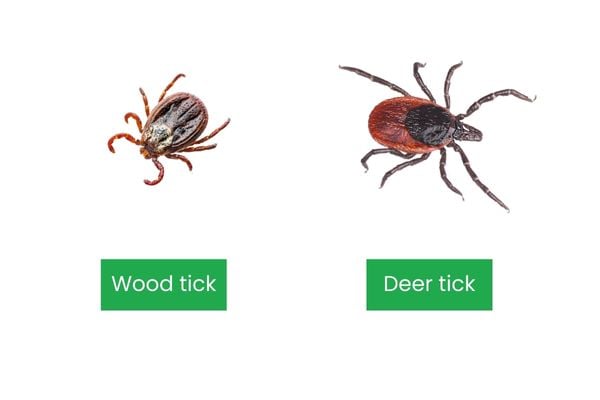
Ticks can be deceptively small, making it challenging to differentiate between deer ticks (Ixodes scapularis) and wood ticks (Dermacentor variabilis) at first glance. However, knowing their distinguishing features is crucial.
- Deer Ticks: These ticks, often referred to as black-legged ticks, are smaller, ranging from 1-5 mm in length. They possess a reddish-brown lower body with a darker head. Male deer ticks are particularly small and have a uniform dark color without the red markings visible on female ticks.
- Wood Ticks: Also known as American dog ticks, wood ticks are larger at 3-10 mm and have a distinctive black lower body adorned with white or grayish patterns. Males boast a mottled appearance with gray or whitish markings.
Tip: When examining ticks, use a magnifying glass if possible. This can help you catch subtle differences in color and pattern more easily.
Habitats
Deer ticks and wood ticks inhabit different environments, which impacts their encounters with humans and pets.
- Deer Ticks: Predominantly found in the northeastern, mid-Atlantic, and north-central regions of the U.S., these ticks thrive in wooded and damp areas where their primary hosts—deer and rodents—are prevalent.
- Wood Ticks: These ticks inhabit a broader range, spanning most states east of the Rocky Mountains and areas along the Pacific Coast, favoring grassy fields, wooded paths, and regions near water sources.
Tip: If you’re planning outdoor activities, use local wildlife information to identify tick-prone areas. Websites and apps that provide wildlife activity data may help you choose safer locales.
Seasonal Behavior and Activity
Understanding the seasonal behavior of deer ticks and wood ticks can significantly aid in prevention.
Deer Ticks
Deer ticks demonstrate varied activity levels throughout the year, influenced by their life stage.
- Larvae and Nymphs: Most active during warmer months, particularly in spring and summer when they seek small hosts like rodents.
- Adults: Prefer cooler weather and are generally highly active during spring and fall, targeting larger hosts, including humans.
Wood Ticks
Wood ticks thrive in warm, humid conditions, making their behavior predictable.
- Adults: Peak activity spans from spring through early summer, with intensified activity during warmer months (April to September).
Tip: Keep a tick calendar for your area. Seasonal snapshots can help you prepare and stay vigilant during peak activity times.
Diseases That Deer and Wood Ticks Can Carry
Recognizing the diseases associated with each tick is critical for health awareness.
- Deer Ticks: Major vectors of Lyme disease, which presents symptoms like a bull’s-eye rash, fever, and aches. Lyme disease prevalence varies: about 50% of deer ticks in the Upper Midwest and Northeast carry the disease compared to around 10% in the South and West. Other diseases include babesiosis, anaplasmosis, and Powassan virus disease.
- Wood Ticks: Wood ticks do not transmit Lyme disease, but they are primary vectors for Rocky Mountain spotted fever, characterized by fever and a spotty rash. They can also carry tularemia, leading to symptoms like ulcers and swollen lymph nodes.
Tip: Familiarize yourself with the symptoms of tick-borne diseases. Keep a health checklist handy to monitor symptoms and seek medical attention early if you suspect an infection.
Deer and Wood Tick Prevention
It’s essential to implement preventive strategies to protect yourself and your family from tick encounters.
- Avoid Tick Habitats: Steer clear of tall grasses, dense vegetation, and wooded areas, especially in peak seasons.
- Wear Protective Clothing: Opt for long pants, long sleeves, and closed-toed shoes. Tuck pant legs into socks or footwear for extra protection.
- Use Tick Repellents: Apply EPA-registered repellents with DEET, permethrin, or picaridin to areas of skin and clothing. Always follow product guidelines for safety.
- Perform Regular Tick Checks: Inspect yourself and pets thoroughly after outdoor activities. The quicker you remove a tick, the lower the risk of disease transmission.
- Maintain Your Yard: Keep your outdoor spaces tidy by maintaining grass height, eliminating leaf litter, and trimming overgrown shrubs to deter ticks.
Alongside self-initiated measures, consider professional tick control services. Companies like Terminix provide specialized treatments to reduce tick populations effectively in your vicinity. Combining regular inspections and expert advice ensures a safer outdoor experience for you and your family.
Tip: Organize community tick awareness workshops in your area. Educating others amplifies protection efforts and builds a supportive environment for public health.

